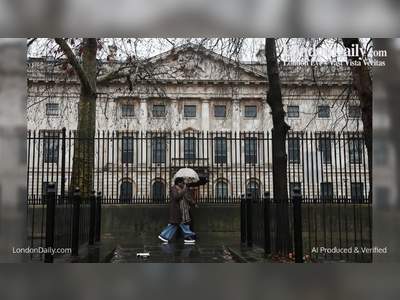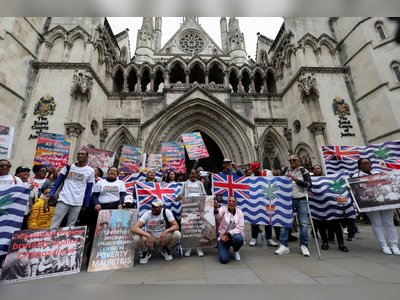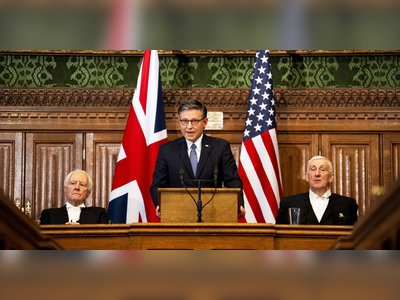
Britain's obsession with school uniform reinforces social divisions
Other countries don’t feel the need to strip children of their individuality
It’s September, and with it comes that back-to-school feeling that even as an adult you can never quite shake. I associate it with the delicious plasticky smell that emanates from the insides of pencil cases; cool, crisper mornings that hit you as you rush from the house trailing toast crumbs, and of course, new uniform – if your parents can afford it.
In the midst of a pandemic that has gutted the economy, this year parents are finding it all the more challenging to pay for their children’s school uniforms, the Children’s Society is warning. In March of this year, it found that the average cost of buying uniform for a child over the course of a year is now £340.
No wonder some parents take out loans, getting into debt so that their child can conform to the school’s wishes, which often include having a sole supplier agreement with a costly uniform company, leaving them with no other option.
I have always found the justification that uniforms demolish class distinctions between pupils to be disingenuous. More than 70 years ago, my grandmother got into grammar school but didn’t go because her foster “family” (I use inverted commas because their interpretation of that role was far from familial) wouldn’t pay for the uniform.
When I’ve written about poverty and education, I have received many letters from older readers who cite costly uniform as one of the educational barriers they faced.
Even now, the prohibitive cost of uniforms at certain schools has forced parents to consider other options for their children. But uniforms prevent bullying, we are told – though for every study claiming this, there is another that concludes that school uniforms have no direct negative effect on behaviour, and some have argued they can even provoke bullying.
I went to a school that was fanatical about compliance with school uniform rules, to a point that felt almost militaristic (we are talking girls being lined up against the wall and having the height of their heels measured with a ruler).
The poorest children had school sweatshirts that had been washed so many times that they were badly discoloured.
My own cuffs had holes in them; some of the other kids had cuffs that had fallen apart completely. Some parents tried to get away with a polo shirt without an embroidered school logo; they were always slightly the wrong shade.
These children were disciplined. I remember feeling the injustice of this, a child held up in front of other pupils, humiliated for the shabby state of their uniform. As for uniforms somehow being a facilitator of better teaching: so much time was devoted to non-compliance checks that it ate into time that could have been spent learning.
I have disliked uniforms ever since. Other European countries seem to manage perfectly well without them, but in the UK there’s a kneejerk response when you tout their abolition.
Ultimately, uniforms are a form of social control and conformity in an education system that already doesn’t focus enough on the individual. Children should be encouraged to express themselves, and if they are exposed to different ways of dressing from an early age they are less likely to tease other children for not being “fashionable”.
At 14, I started buying Vogue and knocking up copies of the clothes, with help from my mum, on the sewing machine. We had very little cash but I used to love non-uniform days, the way all the cliques and subcultures were suddenly made visible, how the child you always thought of as square stalked the corridor in rainbow-coloured socks; the goths with their hoodies, usually banned, professing loyalty to Satan.
There was a bit of benign teasing, yes – I remember one boy saying my outfit looked as though it came from Oxfam, as a lot of my outfits did – but that happened anyway: your rucksack, your shoes, your hair, or your way of speaking were at risk of being picked out. There was always something, uniform or not.
The friends I have who went to the rare British secondary schools that did not have uniforms say that there was very little clothing-motivated bullying. Teachers have said the same.
One supply teacher told me that one of the worst schools at which she had taught, behaviour-wise, had some of the smartest uniforms; one of the best schools had a child in attendance whose trainers were taped together.
Uniform policies reinforce gender and racial divisions as well as class ones, as racist hairstyle policies, sexist skirt rules, the sexual fetishisation of girls’ uniforms (a third of girls say they have been sexually harassed while wearing their uniforms), and the discrimination faced by trans pupils all illustrate.
The argument that they prepare pupils for the workplace is increasingly redundant. With the decline of workplace dressing having been accelerated by the need to work from home during this pandemic, I have no doubt that a suit will look as outdated in a decade as hats and briefcases do now.
But I have little faith in a proper conversation about uniforms taking place, so staunchly are they defended.
Why is it that, as a nation, we are so faithful to the concept where other countries are not? Why are so few alarmed by the need of educators to strip a child of his or her individuality at so young an age? And why do proponents continue to hide behind the falsehood that they help poorer pupils?
A bill to make guidance on the cost of uniforms is making its way through parliament. In Wales, guidance on cost and a need for gender neutrality has already been issued. Nonetheless, many of the nation’s schools still appear to be living in the past.
In the midst of a pandemic that has gutted the economy, this year parents are finding it all the more challenging to pay for their children’s school uniforms, the Children’s Society is warning. In March of this year, it found that the average cost of buying uniform for a child over the course of a year is now £340.
No wonder some parents take out loans, getting into debt so that their child can conform to the school’s wishes, which often include having a sole supplier agreement with a costly uniform company, leaving them with no other option.
I have always found the justification that uniforms demolish class distinctions between pupils to be disingenuous. More than 70 years ago, my grandmother got into grammar school but didn’t go because her foster “family” (I use inverted commas because their interpretation of that role was far from familial) wouldn’t pay for the uniform.
When I’ve written about poverty and education, I have received many letters from older readers who cite costly uniform as one of the educational barriers they faced.
Even now, the prohibitive cost of uniforms at certain schools has forced parents to consider other options for their children. But uniforms prevent bullying, we are told – though for every study claiming this, there is another that concludes that school uniforms have no direct negative effect on behaviour, and some have argued they can even provoke bullying.
I went to a school that was fanatical about compliance with school uniform rules, to a point that felt almost militaristic (we are talking girls being lined up against the wall and having the height of their heels measured with a ruler).
The poorest children had school sweatshirts that had been washed so many times that they were badly discoloured.
My own cuffs had holes in them; some of the other kids had cuffs that had fallen apart completely. Some parents tried to get away with a polo shirt without an embroidered school logo; they were always slightly the wrong shade.
These children were disciplined. I remember feeling the injustice of this, a child held up in front of other pupils, humiliated for the shabby state of their uniform. As for uniforms somehow being a facilitator of better teaching: so much time was devoted to non-compliance checks that it ate into time that could have been spent learning.
I have disliked uniforms ever since. Other European countries seem to manage perfectly well without them, but in the UK there’s a kneejerk response when you tout their abolition.
Ultimately, uniforms are a form of social control and conformity in an education system that already doesn’t focus enough on the individual. Children should be encouraged to express themselves, and if they are exposed to different ways of dressing from an early age they are less likely to tease other children for not being “fashionable”.
At 14, I started buying Vogue and knocking up copies of the clothes, with help from my mum, on the sewing machine. We had very little cash but I used to love non-uniform days, the way all the cliques and subcultures were suddenly made visible, how the child you always thought of as square stalked the corridor in rainbow-coloured socks; the goths with their hoodies, usually banned, professing loyalty to Satan.
There was a bit of benign teasing, yes – I remember one boy saying my outfit looked as though it came from Oxfam, as a lot of my outfits did – but that happened anyway: your rucksack, your shoes, your hair, or your way of speaking were at risk of being picked out. There was always something, uniform or not.
The friends I have who went to the rare British secondary schools that did not have uniforms say that there was very little clothing-motivated bullying. Teachers have said the same.
One supply teacher told me that one of the worst schools at which she had taught, behaviour-wise, had some of the smartest uniforms; one of the best schools had a child in attendance whose trainers were taped together.
Uniform policies reinforce gender and racial divisions as well as class ones, as racist hairstyle policies, sexist skirt rules, the sexual fetishisation of girls’ uniforms (a third of girls say they have been sexually harassed while wearing their uniforms), and the discrimination faced by trans pupils all illustrate.
The argument that they prepare pupils for the workplace is increasingly redundant. With the decline of workplace dressing having been accelerated by the need to work from home during this pandemic, I have no doubt that a suit will look as outdated in a decade as hats and briefcases do now.
But I have little faith in a proper conversation about uniforms taking place, so staunchly are they defended.
Why is it that, as a nation, we are so faithful to the concept where other countries are not? Why are so few alarmed by the need of educators to strip a child of his or her individuality at so young an age? And why do proponents continue to hide behind the falsehood that they help poorer pupils?
A bill to make guidance on the cost of uniforms is making its way through parliament. In Wales, guidance on cost and a need for gender neutrality has already been issued. Nonetheless, many of the nation’s schools still appear to be living in the past.











